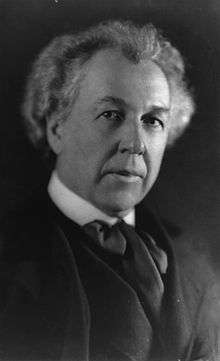Hanna–Honeycomb House
|
Hanna-Honeycomb House | |
|
Frank Lloyd Wright's Hanna House | |
 | |
| Nearest city | Stanford, California, United States |
|---|---|
| Coordinates | 37°24′57.65″N 122°9′48.79″W / 37.4160139°N 122.1635528°WCoordinates: 37°24′57.65″N 122°9′48.79″W / 37.4160139°N 122.1635528°W |
| Built | 1937 |
| Architect | Frank Lloyd Wright |
| NRHP Reference # | 78000780[1] |
| Significant dates | |
| Added to NRHP | November 7, 1978 |
| Designated NHL | June 29, 1989[2] |
The Hanna–Honeycomb House, also known as simply the Hanna House, located on the Stanford University campus in Stanford, California, United States, was Frank Lloyd Wright's first work in the San Francisco region[3] and his first work with non-rectangular structures.[4] The house is recognized as a National Historic Landmark.
Design
Begun in 1937 and expanded over 25 years, this is the first and best example of Wright's innovative hexagonal design.[2] Patterned after the honeycomb of a bee, the house incorporates six-sided figures with 120-degree angles in its plan, in its numerous tiled terraces, and even in built-in furnishings. In American National Bibliography Frederick Ivor-Campbell wrote "(the) Honeycomb House showed how Wright's system of Polygonal modules could provide the openness that he associated with freedom of movement while gracefully integrating the house with its sloping topography. The hexagonal modules of the floor plan gave the appearance of a honeycomb; hence the name of the house."[3] There are no right angles on the floor plan.[5]
The Hanna-Honeycomb house was designed for Paul R. Hanna and his wife Jean, both well-known educators and for many years associated with Stanford University. The project was begun while they were a young married couple and the house was expanded and adapted over time, with Wright's assistance, as their professional and personal needs changed.
Construction and restoration
The construction process was not without difficulty. Wright's initial plans called for flat terrain, but the lot the Hannas purchased was hilly. Cost overruns meant that the original $15,000 price tag ballooned to over $37,000 ($610,072 adjusted for inflation). Additionally, Hanna discovered that his lot encompassed a portion of the San Andreas Fault. Wright, whose Imperial Hotel had survived the 1923 Great Kantō earthquake, was undaunted.[4] Unfortunately, the home was severely damaged by the Loma Prieta earthquake in 1989. Although that branch of the fault was inactive during the quake, the foundation and chimney were essentially unreinforced and likely would have collapsed if the earthquake had lasted longer.[4] A major 10-year restoration was completed in April 1999, this time with seismic reinforcement.
Features
The house is one-story high with a central clerestory (an outside wall of a room or building that rises above an adjoining roof and contains windows) and is constructed of native redwood board[5] and batten, San Jose brick, concrete and plate glass. The house clings to and completes the hillside on which it was built as the floor and courtyard levels conform to the slope of this one and one-half acre site. The entire site includes the main house, a guesthouse, hobby shop, storage building, double carport, breezeway, and garden house with pools and water cascade. After living in the house for 38 years, the Hannas gave the property to Stanford University in 1974.
Current use
It is now owned by Stanford,[5] and is open for tours by reservation only. It is occasionally used for university functions such as seminars and receptions.
Picture Gallery
Exterior
References
- ↑ National Park Service (2006-03-15). "National Register Information System". National Register of Historic Places. National Park Service.
- 1 2 "Hanna-Honeycomb House". National Historic Landmarks Program. National Park Service. Retrieved 2008-05-29.
- 1 2 "Hanna-Honeycomb House". California's Historic Silicon Valley. National Park Service. Retrieved 2007-03-08.
- 1 2 3 Ray, Elaine (April 1999). "Hanna House rises from rubble with Frank Lloyd Wright's vision preserved". Stanford Report. Retrieved 2007-03-13.
- 1 2 3 Bleiberg, Larry (June 7, 2015). "10 Great: Frand Lloyd Wright Homes". USA Today.
![]() This article incorporates public domain material from websites or documents of the National Park Service.
This article incorporates public domain material from websites or documents of the National Park Service.
External links
| Wikimedia Commons has media related to Hanna-Honeycomb House. |
- Hanna House web site
- Hanna House Collection (Stanford University Archives)
- Photographic series of the Hanna House by Esther Born


